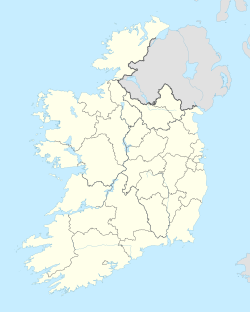Dunsink
In this article, the topic of Dunsink will be addressed from different perspectives, in order to provide a comprehensive and complete vision of it. Along these lines, different aspects related to Dunsink will be analyzed, delving into its origins, evolution and current repercussions. In addition, we will try to provide the reader with a deeper understanding of Dunsink, exploring its possible implications in various areas. In this way, the aim is to generate a debate around Dunsink and encourage critical reflection on its importance and relevance in contemporary society.
Dunsink
Dún Sinche | |
|---|---|
Townland | |
 | |
| Coordinates: 53°23′14″N 6°20′19″W / 53.387338°N 6.33849°W | |
| Country | Ireland |
| Province | Leinster |
| County | Dublin |
| Government | |
| • Local Authority | Fingal County Council |
| • Dáil Éireann | Dublin North-West |
| Time zone | UTC+0 (WET) |
| • Summer (DST) | UTC-1 (IST (WEST)) |
Dunsink (Irish: Dún Sinche, meaning 'fort of Sineach') is a townland in the civil parish of Castleknock, Dublin, in Ireland.[1] The townland has an area of approximately 1.7 square kilometres (0.66 sq mi),[2] and had a population of 323 people as of the 2011 census.[3]
The townland is the site of Dunsink Observatory, where William Rowan Hamilton and Hermann Brück were directors. Built in 1783–1785, it is the oldest scientific institution in Ireland. The observatory houses a 12-inch (30 cm) refracting telescope which was built by Grubbs of Dublin using a French manufactured lens. It is situated on a hill 8 km northwest of Dublin's city centre, where the astronomy section of the School of Cosmic Physics in the Dublin Institute for Advanced Studies is located.[4]
The 1880 Definition of Time Act set the official time in Ireland to be Dublin Mean Time. This was computed as the time at Dunsink, which was about GMT-25m21. In 1916, another act moved Ireland to Greenwich Mean Time. Dunsink time is mentioned five times in James Joyce's novel, Ulysses.[5]
Formerly the location of "Dublin’s biggest landfill facility",[6] Dunsink is also the site of a major unofficial Traveller encampment, the subject of considerable media coverage in 2007.[7] By 2008, Fingal County Council had reportedly compensated those in the encampment to "vacate land".[8][9]
References
- ^ "Dún Sinche / Dunsink". logainm.ie. Placenames Database of Ireland. Retrieved 15 May 2022.
- ^ "Dunsink Townland, Co. Dublin". townlands.ie. Retrieved 15 May 2022.
- ^ "CD175 - Dublin Population by Private Households, Occupied and Vacancy Rate". data.gov.ie. Central Statistics Office. Retrieved 15 May 2022.
Dunsink, Blanchardstown-Abbotstown, Co. Dublin Townlands 2011 Population: 323
- ^ "DIAS Dunsink Observatory". Dublin Institute for Advanced Studies. Retrieved 15 May 2022.
- ^ Joyce, James (1922). Ulysses. Paris: Shakespeare and Company.
... Timeball on the ballastoffice is down. Dunsink time. ...
- ^ "Dunsink landfill to be rezoned by Fingal to allow for 7,000 new homes". independent.ie. Independent News & Media. 16 January 2022. Retrieved 15 May 2022.
- ^ "Whose land is it anyway?". irishtimes.com. Irish Times. 16 June 2007. Retrieved 15 May 2022.
- ^ "Fingal pays €5.47mto move Travellers from land". irishtimes.com. Irish Times. 28 March 2008.
- ^ "Traveller site left a 'wasteland'". The Sunday Times. 4 September 2011.
Four years Fingal county council paid travellers millions to vacate land in northwest Dublin so it could create a public park
